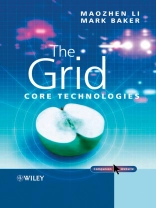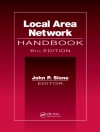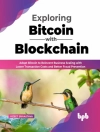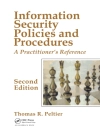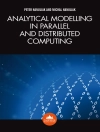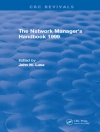Find out which technologies enable the Grid and how to employ them successfully!
This invaluable text provides a complete, clear, systematic, and practical understanding of the technologies that enable the Grid. The authors outline all the components necessary to create a Grid infrastructure that enables support for a range of wide-area distributed applications. The Grid: Core Technologies takes a pragmatic approach with numerous practical examples of software in context. It describes the middleware components of the Grid step-by-step, and gives hands-on advice on designing and building a Grid environment with the Globus Toolkit, as well as writing applications.
The Grid: Core Technologies:
- Provides a solid and up-to-date introduction to the technologies that underpin the Grid.
- Contains a systematic explanation of the Grid, including its infrastructure, basic services, job management, user interaction, and applications.
- Explains in detail OGSA (Open Grid Services Architecture), Web Services technologies (SOAP, WSDL, UDDI), and Grid Monitoring.
- Covers Web portal-based tools such as the Java Co G, Grid Port, Grid Sphere, and JSR 168 Portlets.
- Tackles hot topics such as WSRF (Web Services Resource Framework), the Semantic Grid, the Grid Security Infrastructure, and Workflow systems.
- Offers practical examples to enhance the understanding and use of Grid components and the associated tools.
This rich resource will be essential reading for researchers and postgraduate students in computing and engineering departments, IT professionals in distributed computing, as well as Grid end users such as physicists, statisticians, biologists and chemists.
Jadual kandungan
About the Authors xiii
Preface xv
Acknowledgements xix
List of Abbreviations xxi
1 An Introduction to the Grid 1
1.1 Introduction 1
1.2 Characterization of the Grid 1
1.3 Grid-Related Standards Bodies 4
1.4 The Architecture of the Grid 5
1.5 References 6
Part One System Infrastructure 9
2 OGSA and WSRF 11
Learning Objectives 11
Chapter Outline 11
2.1 Introduction 12
2.2 Traditional Paradigms for Distributed Computing 13
2.2.1 Socket programming 14
2.2.2 RPC 15
2.2.3 Java RMI 16
2.2.4 DCOM 18
2.2.5 CORBA 19
2.2.6 A summary on Java RMI, DCOM and CORBA 20
2.3 Web Services 21
2.3.1 SOAP 23
2.3.2 WSDL 24
2.3.3 UDDI 26
2.3.4 WS-Inspection 27
2.3.5 WS-Inspection and UDDI 28
2.3.6 Web services implementations 29
2.3.7 How Web services benefit the Grid 33
2.4 OGSA 34
2.4.1 Service instance semantics 35
2.4.2 Service data semantics 37
2.4.3 OGSA port Types 38
2.4.4 A further discussion on OGSA 40
2.5 The Globus Toolkit 3 (GT3) 40
2.5.1 Host environment 41
2.5.2 Web services engine 42
2.5.3 Grid services container 42
2.5.4 GT3 core services 43
2.5.5 GT3 base services 44
2.5.6 The GT3 programming model 50
2.6 OGSA-DAI 53
2.6.1 OGSA-DAI port Types 54
2.6.2 OGSA-DAI functionality 56
2.6.3 Services interaction in the OGSA-DAI 58
2.6.4 OGSA-DAI and DAIS 59
2.7 WSRF 60
2.7.1 An introduction to WSRF 60
2.7.2 WSRF and OGSI/GT3 66
2.7.3 WSRF and OGSA 69
2.7.4 A summary of WSRF 70
2.8 Chapter Summary 70
2.9 Further Reading and Testing 72
2.10 Key Points 72
2.11 References 73
3 The Semantic Grid and Autonomic Computing 77
Learning Outcomes 77
Chapter Outline 77
3.1 Introduction 78
3.2 Metadata and Ontology in the Semantic Web 79
3.2.1 RDF 81
3.2.2 Ontology languages 83
3.2.3 Ontology editors 87
3.2.4 A summary of Web ontology languages 88
3.3 Semantic Web Services 88
3.3.1 DAML-S 89
3.3.2 OWL-S 90
3.4 A Layered Structure of the Semantic Grid 91
3.5 Semantic Grid Activities 92
3.5.1 Ontology-based Grid resource matching 93
3.5.2 Semantic workflow registration and discovery in my Grid 94
3.5.3 Semantic workflow enactment in Geodise 95
3.5.4 Semantic service annotation and adaptation in ICENI 98
3.5.5 Portal Lab – A Semantic Grid portal toolkit 99
3.5.6 Data provenance on the Grid 106
3.5.7 A summary on the Semantic Grid 107
3.6 Autonomic Computing 108
3.6.1 What is autonomic computing? 108
3.6.2 Features of autonomic computing systems 109
3.6.3 Autonomic computing projects 110
3.6.4 A vision of autonomic Grid services 113
3.7 Chapter Summary 114
3.8 Further Reading and Testing 115
3.9 Key Points 116
3.10 References 116
Part Two Basic Services 121
4 Grid Security 123
4.1 Introduction 123
4.2 A Brief Security Primer 124
4.3 Cryptography 127
4.3.1 Introduction 127
4.3.2 Symmetric cryptosystems 128
4.3.3 Asymmetric cryptosystems 129
4.3.4 Digital signatures 130
4.3.5 Public-key certificate 130
4.3.6 Certification Authority (CA) 132
4.3.7 Firewalls 133
4.4 Grid Security 134
4.4.1 The Grid Security Infrastructure (GSI) 134
4.4.2 Authorization modes in GSI 136
4.5 Putting it all Together 140
4.5.1 Getting an e-Science certificate 140
4.5.2 Managing credentials in Globus 146
4.5.3 Generate a client proxy 148
4.5.4 Firewall traversal 148
4.6 Possible Vulnerabilities 149
4.6.1 Authentication 149
4.6.2 Proxies 149
4.6.3 Authorization 150
4.7 Summary 151
4.8 Acknowledgements 151
4.9 Further Reading 151
4.10 References 152
5 Grid Monitoring 153
5.1 Introduction 153
5.2 Grid Monitoring Architecture (GMA) 154
5.2.1 Consumer 155
5.2.2 The Directory Service 156
5.2.3 Producers 157
5.2.4 Monitoring data 159
5.3 Review Criteria 161
5.3.1 Scalable wide-area monitoring 161
5.3.2 Resource monitoring 161
5.3.3 Cross-API monitoring 161
5.3.4 Homogeneous data presentation 162
5.3.5 Information searching 162
5.3.6 Run-time extensibility 162
5.3.7 Filtering/fusing of data 163
5.3.8 Open and standard protocols 163
5.3.9 Security 163
5.3.10 Software availability and dependencies 163
5.3.11 Projects that are active and supported; plus licensing 163
5.4 An Overview of Grid Monitoring Systems 164
5.4.1 Autopilot 164
5.4.2 Control and Observation in Distributed Environments (CODE) 168
5.4.3 Grid ICE 172
5.4.4 Grid Portals Information Repository (GPIR) 176
5.4.5 Grid RM 180
5.4.6 Hawkeye 185
5.4.7 Java Agents for Monitoring and Management (JAMM) 189
5.4.8 Map Center 192
5.4.9 Monitoring and Discovery Service (MDS3) 196
5.4.10 Mercury 201
5.4.11 Network Weather Service 205
5.4.12 The Relational Grid Monitoring Architecture (R-GMA) 209
5.4.13 vis Perf 214
5.5 Other Monitoring Systems 217
5.5.1 Ganglia 217
5.5.2 Grid Mon 219
5.5.3 GRM/PROVE 220
5.5.4 Nagios 221
5.5.5 Net Logger 222
5.5.6 SCALEA-G 223
5.6 Summary 225
5.6.1 Resource categories 225
5.6.2 Native agents 225
5.6.3 Architecture 226
5.6.4 Interoperability 226
5.6.5 Homogeneous data presentation 226
5.6.6 Intrusiveness of monitoring 227
5.6.7 Information searching and retrieval 231
5.7 Chapter Summary 233
5.8 Further Reading and Testing 236
5.9 Key Points 236
5.10 References 236
Part Three Job Management and User Interaction 241
6 Grid Scheduling and Resource Management 243
Learning Objectives 243
Chapter Outline 243
6.1 Introduction 244
6.2 Scheduling Paradigms 245
6.2.1 Centralized scheduling 245
6.2.2 Distributed scheduling 246
6.2.3 Hierarchical scheduling 248
6.3 How Scheduling Works 248
6.3.1 Resource discovery 248
6.3.2 Resource selection 251
6.3.3 Schedule generation 251
6.3.4 Job execution 254
6.4 A Review of Condor, SGE, PBS and LSF 254
6.4.1 Condor 254
6.4.2 Sun Grid Engine 269
6.4.3 The Portable Batch System (PBS) 274
6.4.4 LSF 279
6.4.5 A comparison of Condor, SGE, PBS and LSF 288
6.5 Grid Scheduling with Qo S 290
6.5.1 App Le S 291
6.5.2 Scheduling in Gr ADS 293
6.5.3 Nimrod/G 293
6.5.4 Rescheduling 295
6.5.5 Scheduling with heuristics 296
6.6 Chapter Summary 297
6.7 Further Reading and Testing 298
6.8 Key Points 298
6.9 References 299
7 Workflow Management for the Grid 301
Learning Outcomes 301
Chapter Outline 301
7.1 Introduction 302
7.2 The Workflow Management Coalition 303
7.2.1 The workflow enactment service 305
7.2.2 The workflow engine 306
7.2.3 Wf MC interfaces 308
7.2.4 Other components in the Wf MC reference model 309
7.2.5 A summary of Wf MC reference model 310
7.3 Web Services-Oriented Flow Languages 310
7.3.1 XLANG 311
7.3.2 Web services flow language 311
7.3.3 WSCI 313
7.3.4 BPEL4WS 315
7.3.5 BPML 317
7.3.6 A summary of Web services flow languages 318
7.4 Grid Services-Oriented Flow Languages 318
7.4.1 GSFL 318
7.4.2 SWFL 321
7.4.3 GWEL 321
7.4.4 GALE 322
7.4.5 A summary of Grid services flow languages 323
7.5 Workflow Management for the Grid 323
7.5.1 Grid workflow management projects 323
7.5.2 A summary of Grid workflow management 329
7.6 Chapter Summary 330
7.7 Further Reading and Testing 331
7.8 Key Points 332
7.9 References 332
8 Grid Portals 335
Learning Outcomes 335
Chapter Outline 335
8.1 Introduction 336
8.2 First-Generation Grid Portals 337
8.2.1 A three-tiered architecture 337
8.2.2 Grid portal services 338
8.2.3 First-generation Grid portal implementations 339
8.2.4 First-generation Grid portal toolkits 341
8.2.5 A summary of the four portal tools 348
8.2.6 A summary of first-generation Grid portals 349
8.3 Second-Generation Grid Portals 350
8.3.1 An introduction to portlets 350
8.3.2 Portlet specifications 355
8.3.3 Portal frameworks supporting portlets 357
8.3.4 A Comparison of Jetspeed, Web Sphere Portal and Grid Sphere 368
8.3.5 The development of Grid portals with portlets 369
8.3.6 A summary on second-generation Grid portals 371
8.4 Chapter Summary 372
8.5 Further Reading and Testing 373
8.6 Key Points 373
8.7 References 374
Part Four Applications 377
9 Grid Applications – Case Studies 379
Learning Objectives 379
Chapter Outline 379
9.1 Introduction 380
9.2 GT3 Use Cases 380
9.2.1 GT3 in broadcasting 381
9.2.2 GT3 in software reuse 382
9.2.3 A GT3 bioinformatics application 387
9.3 OGSA-DAI Use Cases 387
9.3.1 e Dia Mo ND 387
9.3.2 ODD-Genes 388
9.4 Resource Management Case Studies 388
9.4.1 The UCL Condor pool 388
9.4.2 SGE use cases 389
9.5 Grid Portal Use Cases 390
9.5.1 Chiron 390
9.5.2 GENIUS 390
9.6 Workflow Management – Discovery Net Use Cases 391
9.6.1 Genome annotation 391
9.6.2 SARS virus evolution analysis 391
9.6.3 Urban air pollution monitoring 392
9.6.4 Geo-hazard modelling 394
9.7 Semantic Grid – my Grid Use Case 394
9.8 Autonomic Computing – Auto Mate Use Case 395
9.9 Conclusions 397
9.10 References 398
Glossary 401
Index 419
Mengenai Pengarang
Dr Maozhen Li is currently Lecturer in Electronics and Computer Engineering, in the School of Engineering and Design at Brunel University, UK. From January 1999 to January 2002, he was Research Associate in the Department of Computer Science, Cardiff University, UK. Dr Li received his Ph D degree in 1997, from the Institute of Software, Chinese Academy of Sciences, Beijing, China. His research interests are in the areas of Grid computing, problem-solving environments for large-scale simulations, software agents for semantic information retrieval, multi-modal user interface design and computer support for cooperative work. Since 1997, Dr Li has published 30 research papers in prestigious international journals and conferences.
Dr Mark Baker is a hardworking Reader in Distributed Systems at the University of Portsmouth. He also currently holds visiting chairs at the universities of Reading and Westminster. Mark has resided in the relative safety of academia since leaving the British Merchant, where he was a navigating officer, in the early 1980s. Mark has held posts at various universities, including Cardiff, Edinburgh and Syracuse. He has a number of geek-like interests, which his research group at Portsmouth help him pursue. These include wide-area resource monitoring, messaging systems for parallel and wide-area applications, middleware such as information and security services, as well as performance evaluation and modelling of computer systems.
Mark’s non-academic interests include squash (getting too old), DIY (he may one day finish his house off), reading (far too many science fiction books), keeping the garden ship-shape and a beer or two to reduce the pain of the aforementioned activities.
